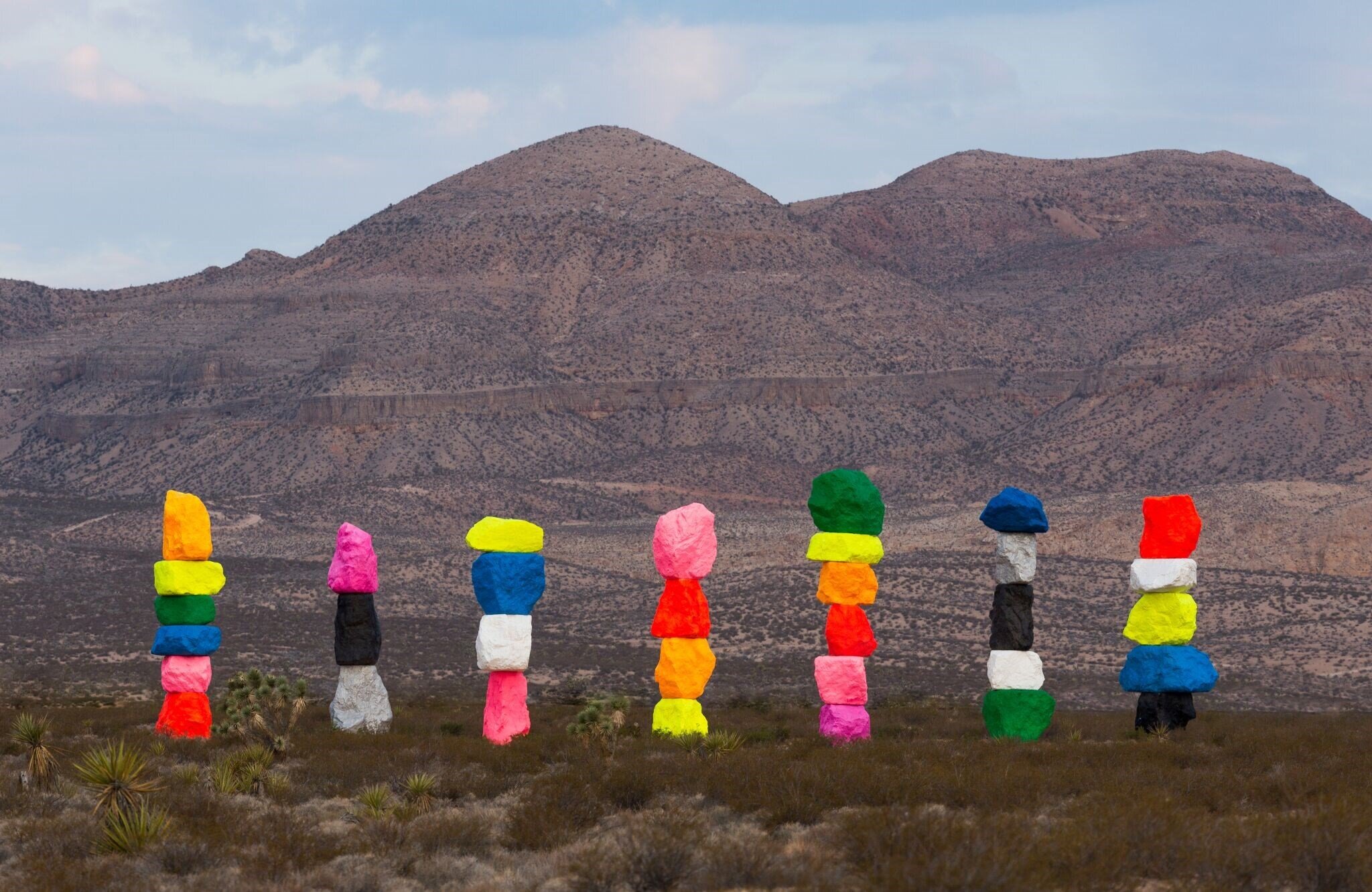
Ugo Rondinone
b. 1963 in Brunnen, Switzerland
Lives and works in New York City, NY, USA
Ugo Rondinone strives to make works that meditate on everyday life and the world and particularly reflect on the theme of time, blurring the distinction between the real and artificial. He avoids producing art that is densely intellectual. The artist claims to work with ‘very basic raw symbols, something that everyone can relate to, from a child to an old person, from the East to the West.’ The emphasis is on creating engagement through experiencing the work first, rather than a conceptual understanding.
Ugo Rondinone rose to international acclaim in the early 1990s with highly varied work, the result of refusing to commit to any specific style. He produces paintings, drawings, sculpture (large and small), photography, video, and sound and installation art. He is also a poet, collector and curator.
The rainbow is one of the most common motifs in Ugo Rondinone’s artwork. From 1997, he began producing lit signs composed of large words—simple poetic titles and phrases—supported high in the air and following the form and colours of the rainbow. At once beautiful and fantastical, the rainbow is also an easily understood LGBT symbol, signifying the freedom to love whom one wants. For Rondinone, this symbol is especially important; he was the longtime partner of famed New York writer, poet and performer, John Giorno (1936 -2019).
Ugo Rondinone’s use of Day-Glo rainbow colours extends into many other works. One key sculptural motif involves stacking brightly coloured rocks, seen on its grandest scale with his Seven Magic Mountains work in Nevada (11 May 2016–2018). These towers of rough-cut boulders are painted in highly artificial Day-Glo rainbow hues, as well as in black, white and silver. In a press release for the installation, Rondinone stated that he sees this combination of artificial colour and natural rock formations as a continuum ‘between human and nature, artificial and natural, then and now.’
Not all of Rondinone’s art involves bright colour though. Another motif consists of simple primitive figures, composed of roughly hewn stone blocks evocative of Stonehenge. Another still is of mask-like sculptures inspired by indigenous Alaskan Yup’ik masks: aluminium casts made from clay moulds, painted in a single dull colour. Another, yet again in aluminium, is the cast of ghostly olive trees, coated in white enamel.
Within the gallery context, Rondinone is most known for creating multimedia installations. He designs exhibitions that generate a holistic experience. Through meticulous planning—such as working with miniature models—he sets up relations between different works, enhancing them through the layout, colour scheme and architecture of the space itself. In these installations, he brings together different motifs developed over his career in varied configurations to generate different meanings. For example, Ugo Rondinone’s lacklustre clown, which appears passively in live-action, video and life-size sculptures, might sit amid his hypnotic, blurred target paintings, floating mandalas or wall paintings made of brick planes coated in single, vivid, Day-Glo colours.
Straddling the divide between gallery and public art, Ugo Rondinone’s art has been exhibited at major art institutions in the United States, Europe and China as well as at the 56th Venice Biennale, at the same time producing large-scale works for exhibitions in public spaces.







